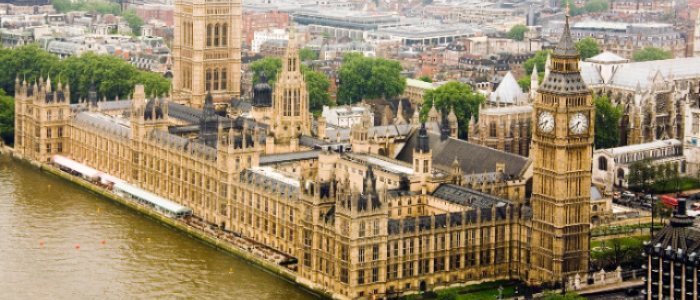
The story of this timeline ends in 1999, the year when Chancellor of the Exchequer Gordon Brown delivered his third budget and announced the introduction of IR35. This piece of legislation has alone had the greatest impact upon contractors. We can see its presence in the budget in 2011 when it was announced it was going nowhere.
In attempting to deal with the issue of ‘disguised employment’, IR35 was intended to stop people setting up their own limited company and working as a contractor rather than an employee, with all of the tax benefits this involves.
The timeline
This timeline focuses on the policies like the IR35 bombshell in 1999, namely those that have had a total impact upon the working lives of contractors. Not only do the tax and spending changes announced by the Chancellor each year have a direct and often dramatic impact, but they also paint a picture of the political weather of the time, and in particular how sympathetic (or otherwise) the landscape is for contractors.
What follows is a brief guide to the budgets stretching from 2016 back to 1999, and the measure within each budget which may have impacted most specifically upon the lives of contractors:
2016
- Public sector bodies to be responsible for tax rules applied to off-payroll workers
- Dividend tax allowance of £5,000 introduced, tax rates above this allowance:
- 7.5% for basic rate taxpayers
- 32.5% for higher rate taxpayers
- 38.1% for additional rate taxpayers
- National Insurance Employment Allowance for single person companies withdrawn
- Capital Gains Tax cut from 28% to 20% for higher rate taxpayers and 18% to 10% for standard rate tax payers
- Tax charge for company loans increased in line with dividend tax rate from 23% to 32.5%
- Corporation tax cut to 17% by April 2020
- Voluntary ‘pay as you go’ facility to allow self-employed to pay their taxes
- £1,000 allowance for property and trading income to be introduced
Source: https://www.gov.uk/government/publications/budget-2016-documents
2015
- Tax relief on travel and subsistence expenses withdrawn for contractors under client supervision
- Increased use of Accelerated Payment Notices
- Self-assessment tax returns to be phased out and replaced with online accounts
- Class 2 national insurance Contributions for the self-employed to be abolished
- R and D tax credits to be made more accessible to new businesses
- Extension of the Prompt Payment Code
- VAT charges on private sector contractors who bid for taxpayer-backed work will be removed
- Corporation tax cut to 19% in 2017 and 18% in 2020
- Annual Investment Allowance set to new high of £2000
- Employment Allowance raised to £3,000 from April 2016
Source: https://www.gov.uk/government/uploads/system/uploads/attachment_data/file/443300/50325_HMT_Red_Book_Complete.pdf
2014
- Annual investment allowance doubled to £500,000
- Business rates discounts extended for further three years.
- Investment allowance doubled to £500,000.
- National Insurance for the self-employed to be collected via self-assessment
- Taxpayers being investigated or assessed by HMRC will have to pay disputed tax up front
https://www.gov.uk/government/topical-events/budget-2014
2013
- Main rate of Corporation Tax to 20%, in line with the small profits rate
- Anti-tax avoidance measures including General Anti Abuse Rule introduced
- Government to increase procurement from small firms five fold
- SEIS reinvestment relief extended
- A new Income Tax scheme is to be introduced in the 2013/14 tax year for small unincorporated businesses, which will allow eligible businesses to calculate profits on a cash basis.
- The Small Business Rate Relief Scheme extended for a further 12 months, until April 2014.
Source: http://webarchive.nationalarchives.gov.uk/20130321134645/http://www.hm-treasury.gov.uk/budget2013_statement.htm
2012
- Corporation Tax for larger firms cut to 24%, aiming for 22% in 2014
- Consultation on a new General Anti-Avoidance Rule (GAAR) to tackle tax avoidance
- Higher rate income tax cut from 50p to 45p
- Personal tax allowance increased by £1,100 to £9,205.
- Limit on uncapped income tax reliefs. For claims of £50,000 or more, there will be a cap of 25% on income, or £50,000.
- The annual threshold for VAT registration will be raised to £77,000
Source: http://webarchive.nationalarchives.gov.uk/20130129110402/http://cdn.hm-treasury.gov.uk/budget2012_complete.pdf
2011
- Income tax relief for venture capital trusts and the enterprise investment scheme increased to 30%.
- VAT registration threshold raised to £73,000/de-registration threshold £71,000
- Tax system simplified via the abolition of 43 tax reliefs
- Main corporation tax rate cut by 2% to 26%
- Smaller profits rate cut by 1% to 20%
- Business rate relief extended
- Lifetime allowance for Entrepreneurs’ Relief doubles to £10m
- IR35 to remain in place
- Small companies’ R&D tax credit is set to rise to 200%, and 225% in 2012
- HMRC’s ‘Time to Pay’ scheme to remain in place.
- The small business rate relief scheme extended for another year.
Source: http://webarchive.nationalarchives.gov.uk/20130129110402/http://cdn.hm-treasury.gov.uk/2011budget_complete.pdf
2010
- 10% capital gains tax extended to cover first £5m of lifetime gains
- Capital allowances on plant and machinery drops from 20% to 18%
- Annual investment allowance cut to £25,000
- Corporation tax to drop from 28% by 1p per year until hitting 24%
- Small company’s tax cut to 20%
- New firms outside south-east to be exempt from employer national insurance contributions, up to £5,000, for the first 10 employees recruited.
- Capital gains tax to hit 28% for higher earners
- Personal income tax allowance lifted to £7,475
Source:http://webarchive.nationalarchives.gov.uk/20130129110402/http:/cdn.hm-treasury.gov.uk/junebudget_complete.pdf
2009
- Help for loss making companies extended – able to reclaim taxes paid in last three years
- Capital allowance rate doubled to 40%
- Top rate of income tax, on earnings above £150,000 to rise to 50%
Source: http://webarchive.nationalarchives.gov.uk/20130129110402/http:/www.hm-treasury.gov.uk/d/bud09_completereport_2520.pdf
2008
- Corporation tax cut from 30% to 28%
- Simpler taxes for small companies.
- Capital gains tax remaining at 10%.
- Funds available through the small firms’ loans guarantee increased by 60%
- Basic rate income tax cut to 20p
- Income tax relief on investment raised to £500,000
https://www.gov.uk/government/uploads/system/uploads/attachment_data/file/250345/0388.pdf
2007
- Tax on small corporations to rise from 20p to 22p
- 10p income tax rate abolished
- High tax threshold raised from £38,000 to £43,000
http://webarchive.nationalarchives.gov.uk/20100407010852/http:/www.hm-treasury.gov.uk/d/bud07_chapter1_314.pdf
2006
- Expansion of shared equity schemes
- Larger businesses to qualify for research and development tax credit
- Employer computer relief cancelled
Source: http://news.bbc.co.uk/1/hi/in_depth/business/2006/budget_2006/default.stm
2005
- Expansion of simplified VAT scheme
Source: https://www.gov.uk/government/uploads/system/uploads/attachment_data/file/251094/372.pdf
2004
- Dividends to be taxed at 19%
http://webarchive.nationalarchives.gov.uk/20130129110402/http:/www.hm-treasury.gov.uk/media/1/B/Budget_2004.pdf
2003
- Corporation tax, small business corporation tax and capital gains tax frozen
- New rate of stamp duty on rental leases
- Firms with a turnover of less than £56,000 made exempt from VAT
- Small businesses exempt from automatic fines for late payment of VAT
- Abolition of North Sea oil taxes on new production
- Qualifying threshold for 40% investment allowance raised
- IT investment allowances extended
http://webarchive.nationalarchives.gov.uk/20091222074811/http://www.hmrc.gov.uk/budget2003/budgetspeech2003.pdf
2002
- Starting rate of corporation tax cut from 10p to zero. Firms with profits under £10,000 removed from corporation tax altogether
- Standard corporation tax reduced from 20p to 19p
- VAT reforms – businesses with turnover of up to £100,000 to pay flat rate rather than recording every item (to be extended to 200, firms with turnover between £100,000 – £150,000 next year
- Automatic fines for late payments to be abolished
- Automatic relief from VAT on bad debts allowed
http://webarchive.nationalarchives.gov.uk/20130129110402/http:/www.hm-treasury.gov.uk/media/4/1/Budget_2002.pdf
2001
- Long-term capital gains tax rate cut to 10p
- VAT returns to be based on annual company accounts
- VAT threshold raised to £54,000 for small business
- Proposed lower rate for firms with a turnover of up to £100,000
- 10p tax band widened from £1,520 to £1,880
http://webarchive.nationalarchives.gov.uk/20100407010852/http:/www.hm-treasury.gov.uk/d/435.pdf
2000
- Income tax cut by 1p
- 40% threshold remained the same
- Tax breaks for firms investing in IT or e-commerce
Source: https://www.gov.uk/government/uploads/system/uploads/attachment_data/file/265498/hc346.pdf
1999
- Introduction of IR35
Source: https://www.gov.uk/government/publications/budget-report-march-1999
In summary
Taken as a whole, the landscape for freelancers and contractors is probably more sympathetic now than it was in 1999, driven mainly by a realisation that more people are opting to embrace contracting and more companies are choosing to utilise talent in this manner rather than via direct employment.
For a more in-depth look at the common changes that hurt contractors, read this article [copy in another article yet on site].
At Contracting Wise, we offer assistance with every aspect of contracting – to speak to a member of our team, call 0203 642 8679



